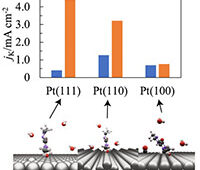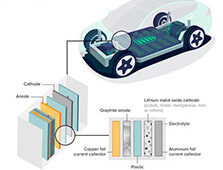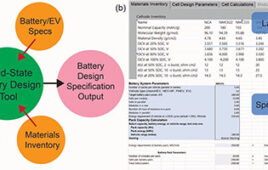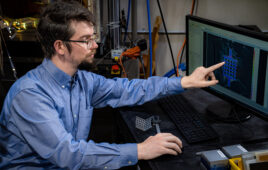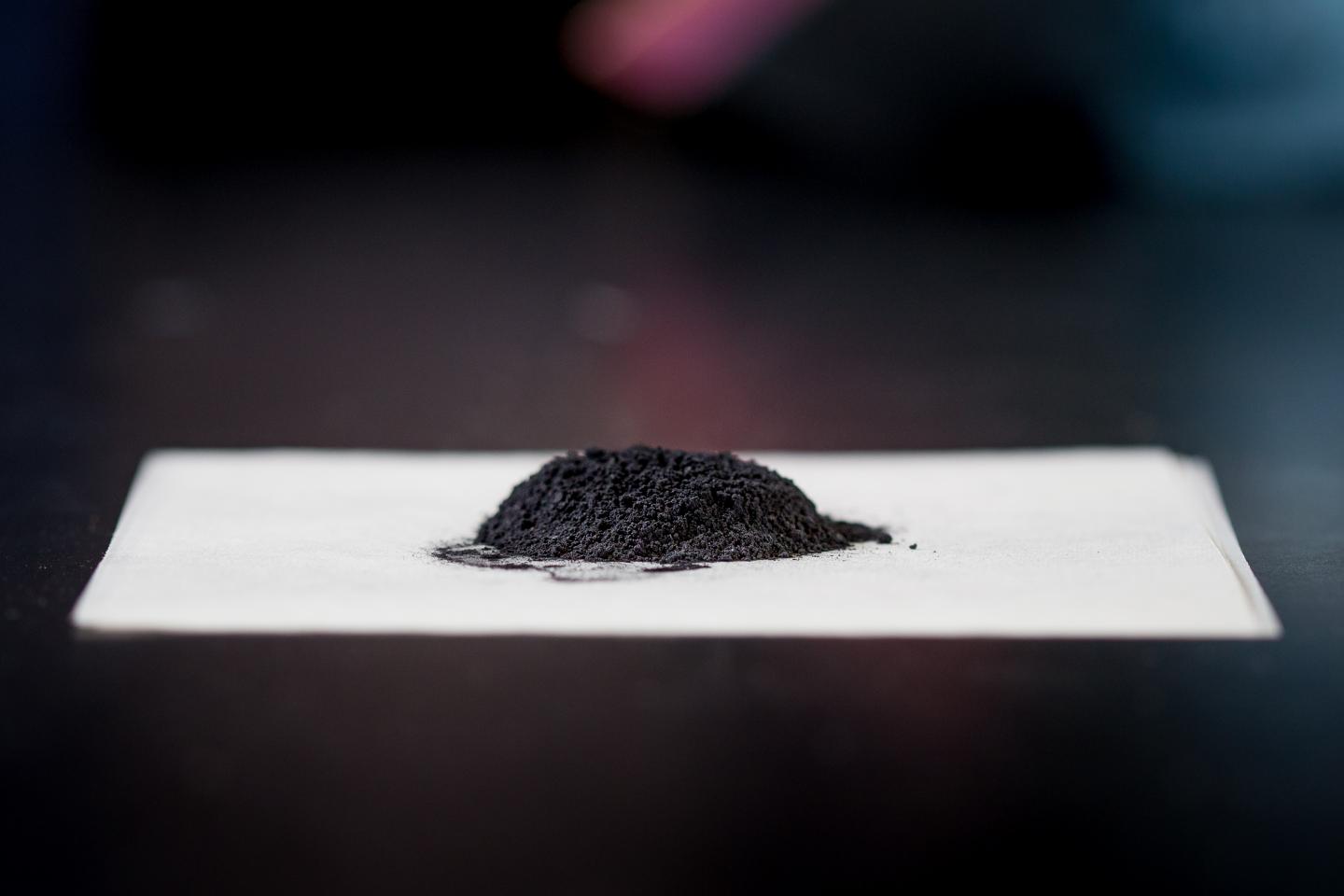
Used cathode particles from spent lithium ion batteries are recycled and regenerated to work as good as new. Credit: David Baillot/UC San Diego Jacobs School of Engineering
A new recycling process might finally solve the dilemma of what to do with old lithium ion batteries in cell phones and laptops.
A team of nanoengineers from the University of California San Diego has created an energy-efficient recycling process that restores used cathodes from spent lithium ion batteries to their original state, which could be both environmentally beneficial and cost-efficient.
To make the batteries as good as new, the researchers collected cathode particles from spent lithium ion batteries and pressurized the particles in a hot, alkaline solution containing lithium salt—which can be recycled, and reused to process more batches of batteries.
They then put the particles through a short annealing process where they were heated to 800 degrees Celsius and then cooled very slowly.
The new cathodes were tested in batteries built in the lab and showed the same energy storage capacity, charging time and lifetime as the originals.
“We can simply restore the degraded material by putting it through the same processing steps,” Zheng Chen, a professor of nanoengineering at UC San Diego, said in a statement.
The study offers a solution to what should be done with lithium ion batteries when they wear out. Less than 5 percent of lithium ion batteries are currently recycled.
“Think about the millions of tons of lithium ion battery waste in the future, especially with the rise of electric vehicles, and the depletion of precious resources like lithium and cobalt–mining more of these resources will contaminate our water and soil,” Chen said. “If we can sustainably harvest and reuse materials from old batteries, we can potentially prevent such significant environmental damage and waste.”
The new method could also result in a cost-savings.
“The price of lithium, cobalt and nickel has increased significantly,” Chen said. “Recovering these expensive materials could lower battery costs.”
The new method can be used to recover and restore lithium ion battery cathode materials called lithium cobalt oxide, which is commonly used in consumer electronic devices. The method can also be used on NMC—a popular lithium cathode that contains nickel, manganese and cobalt—which is used in most electric vehicles.
As a lithium ion battery wears out, the cathode material loses some of its lithium atoms and as the cathode’s atomic structure changes it becomes less capable of moving ions in and out.
However, the new recycling process restores both the cathode’s lithium concentration and atomic structure to their original states.

